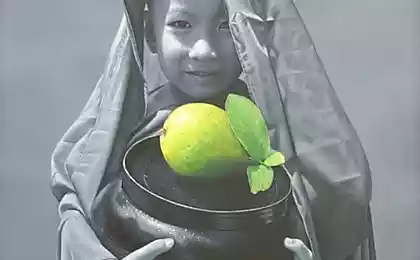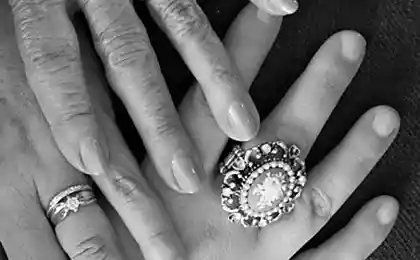689
How to teach children Thanks
Each parent is responsible for their child. It is very important to help our children develop the skills that will help them to become conscious and healthy individuals. I think one of the most important skills throughout life is the emotional well-being. And you can reach it through a simple thanks.
But how to teach your children Thanks?
With just a few practices, you can easily explain to a child the idea of gratitude, which in future will be able to provide them with a sense of well-being and happiness in adult life. This will help them build a solid foundation for the mental health of the individual growth.
I offer you five simple and effective practices to teach the child thanks:

1. Participation in random acts of kindness
Children often spontaneously share a toy or friendly words with teachers, friends or relatives. Pay attention when the child manifests itself in such a way in the next time ozvuchte aloud how much you appreciate their kindness. Children often repeat our behavior. Let your child watch you. Simulate your actions to be helpful and kind to other people. Seeing your participation in good deeds, a child is required to pick up your mood.
2. Spend time in nature
Nature allows children and adults to slow down the rhythm of the busy city life. In a quiet environment, we can afford to be more careful and sensible to enjoy the beauty of the surrounding world. We can be grateful for the coolness that we bestow shady trees. For a wonderful bright sunset, which gives us the passing day. Teach your children to see the best in the most simple! Taking a walk with my daughter, we often like to consider the clouds, presenting them in the form of shaped images. Observing nature, even for a short time, allow yourself and your child to appreciate its beauty that exists all around us, LAMP kid realize something greater than ourselves.
3. The ritual "night of reflection»
After eating, bath and stories children become more relaxed and open to communication with parents. Use this time as an opportunity to reflect on the "maximum" and "minimum" of the day. You can start with ways of sharing the joy of their own emotions. What for you reflected on this day, a challenge has been thrown, and what results were achieved. Consciously help the child focus on the big and small things that went well and show your child, for which we can be grateful to the present day of our lives.
4. The practice of mindfulness while eating
By removing toys, electronics and books, we can help children to focus directly on their food, use their senses to enjoy and appreciate their food and how they eat. During the meal, involve the child in the discussion about where the food appeared on his plate? For example, strawberries are not just magically appeared on the plate. Explain that he is now able to enjoy this berry, it has gone a long way. Starting from the fruitful soil, wind, sun, water and ending with a farmer, a truck and a market where you buy it. When a child begins to present all this long journey, he feels a greater sense of wonder and appreciation for the food that eats.
5. Volunteer in good deeds
Volunteering can help children to understand as well, when there is an opportunity to help those less fortunate. Children may have an inherent sympathy for a particular case. For example, some of them may greatly care for the environment; others may feel a burning desire to help animals.
Take time to work together with your child to find a way to assist, interested in his heart and the appropriate age. Events that promote gratitude need not be expensive and long-term. They must come from the heart. Be an example to your children and they will follow you!
Author: Boho Lana
But how to teach your children Thanks?
With just a few practices, you can easily explain to a child the idea of gratitude, which in future will be able to provide them with a sense of well-being and happiness in adult life. This will help them build a solid foundation for the mental health of the individual growth.
I offer you five simple and effective practices to teach the child thanks:

1. Participation in random acts of kindness
Children often spontaneously share a toy or friendly words with teachers, friends or relatives. Pay attention when the child manifests itself in such a way in the next time ozvuchte aloud how much you appreciate their kindness. Children often repeat our behavior. Let your child watch you. Simulate your actions to be helpful and kind to other people. Seeing your participation in good deeds, a child is required to pick up your mood.
2. Spend time in nature
Nature allows children and adults to slow down the rhythm of the busy city life. In a quiet environment, we can afford to be more careful and sensible to enjoy the beauty of the surrounding world. We can be grateful for the coolness that we bestow shady trees. For a wonderful bright sunset, which gives us the passing day. Teach your children to see the best in the most simple! Taking a walk with my daughter, we often like to consider the clouds, presenting them in the form of shaped images. Observing nature, even for a short time, allow yourself and your child to appreciate its beauty that exists all around us, LAMP kid realize something greater than ourselves.
3. The ritual "night of reflection»
After eating, bath and stories children become more relaxed and open to communication with parents. Use this time as an opportunity to reflect on the "maximum" and "minimum" of the day. You can start with ways of sharing the joy of their own emotions. What for you reflected on this day, a challenge has been thrown, and what results were achieved. Consciously help the child focus on the big and small things that went well and show your child, for which we can be grateful to the present day of our lives.
4. The practice of mindfulness while eating
By removing toys, electronics and books, we can help children to focus directly on their food, use their senses to enjoy and appreciate their food and how they eat. During the meal, involve the child in the discussion about where the food appeared on his plate? For example, strawberries are not just magically appeared on the plate. Explain that he is now able to enjoy this berry, it has gone a long way. Starting from the fruitful soil, wind, sun, water and ending with a farmer, a truck and a market where you buy it. When a child begins to present all this long journey, he feels a greater sense of wonder and appreciation for the food that eats.
5. Volunteer in good deeds
Volunteering can help children to understand as well, when there is an opportunity to help those less fortunate. Children may have an inherent sympathy for a particular case. For example, some of them may greatly care for the environment; others may feel a burning desire to help animals.
Take time to work together with your child to find a way to assist, interested in his heart and the appropriate age. Events that promote gratitude need not be expensive and long-term. They must come from the heart. Be an example to your children and they will follow you!
Author: Boho Lana
























